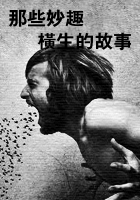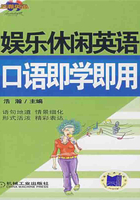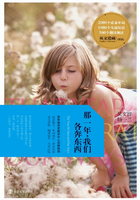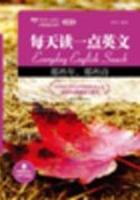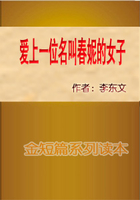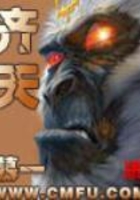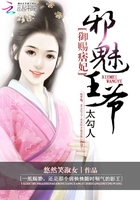3. There is still another aspect under which the beauty of the world may be viewed, namely, as it becomes an object of the intellect. Beside the relation of things to virtue, they have a relation to thought. The intellect searches out the absolute order of things as they stand in the mind of God, and without the colors of affection. The intellectual and the active powers seem to succeed each other, and the exclusive activity of the one generates the exclusive activity of the other. There is something unfriendly in each to the other, but they are like the alternate periods of feeding and working in animals; each prepares and will be followed by the other. Therefore does beauty, which, in relation to actions, as we have seen, comes unsought, and comes because it is unsought, remain for the apprehension and pursuit of the intellect; and then again, in its turn, of the active power. Nothing divine dies. All good is eternally reproductive. The beauty of nature re-forms itself in the mind, and not for barren contemplation, but for new creation.
All men are in some degree impressed by the face of the world; some men even to delight. This love of beauty is Taste. Others have the same love in such excess, that, not content with admiring, they seek to embody it in new forms. The creation of beauty is Art.
The production of a work of art throws a light upon the mystery of humanity. A work of art is an abstract or epitome of the world. It is the result or expression of nature, in miniature. For although the works of nature are innumerable and all different, the result or the expression of them all is similar and single. Nature is a sea of forms radically alike and even unique. A leaf, a sunbeam, a landscape, the ocean, make an analogous impression on the mind. What is common to them all, — that perfectness and harmony, is beauty. The standard of beauty is the entire circuit of nature forms, —the totality of nature; which the Italians expressed by def?ining beauty il piu nell “uno.” Nothing is quite beautiful alone; nothing but is beautiful in the whole. A single object is only so far beautiful as it suggests this universal grace. The poet, the painter, the sculptor, the musician, the architect, seek each to concentrate this radiance of the world on one point, and each in his several work to satisfy the love of beauty which stimulates him to produce. Thus is Art a nature passed through the alembic of man. Thus in art does Nature work through the will of a man f?illed with the beauty of her f?irst works.
The world thus exists to the soul to satisfy the desire of beauty. This element I call an ultimate end. No reason can be asked or given why the soul seeks beauty. Beauty, in its largest and profoundest sense, is one expression for the universe. God is the all-fair. Truth, and goodness, and beauty, are but different faces of the same All. but beauty in nature is not ultimate. It is the herald of inward and eternal beauty, and is not alone a solid and satisfactory good. It must stand as a part, and not as yet the last or highest expression of the f?inal cause of Nature.
大自然除了提供人类衣食所需之外,还满足了人类一种更高尚的追求——那就是满足了人们的爱美之心。
古希腊人把“宇宙”称为“科士谟土”,即美丽之意。万物之本性无比奇妙,或者可以说,人类独具适应性的潜能,能够构形筑影。因而,大自然所有的基本形态,蓝天,山峦,树木,鸟兽,等等,都能使我们惊喜;这种惊喜并不依赖外物,也不因其有任何实用目的,只是就万物的线条、色彩、运动与组合看起来都让人爽心怡性。在某种程度上,这可能由于我们的眼睛自身。眼睛,是世界上最好的画家。
眼睛的结构与光学的法则互动,产生出所谓的“透视”,因此任何一组物体,不管它是何种东西,在我们看来都觉得色彩清晰,明暗层次鲜明,井然有序,整体就似乎是一个球;个别的物体或许形态拙劣,了无生趣,但一经组合,就变得对称而完满了。故构图的巧妙,非人的眼睛莫属;而要想把色彩铺设得美妙,则要依赖光线。再丑恶的东西,强光之下,也会产生美。光线不但激活了感官,而且光线好似空间和时间,有着能把一切都覆盖的性质,所以任何东西只要在光明下都是赏心悦目的。即使死尸也有它自己的美。自然界所有事物都在“美”的笼罩之下,几乎所有的个体都这么美好。如橡实、葡萄、松果、麦穗、鸡蛋、形形色色的翅膀以及种类繁多的鸟,如狮爪、蛇、蝴蝶、贝壳、火焰、云朵、蓓蕾、绿叶和如棕榈树似的许多树的树干,我们不断地描摹它们,把它们作为“美”的典范。
为了更进一步地了解,我们可将自然之美,分三方面剖析:
一,倘能抱着单纯的心态去感知自然形态也是一种快乐。自然形态和活动的效用,于人生是必不可缺的。就最基本的作用来说,似乎局限于实用和审美两者之间。俗世纷扰牵绊了人的身心,一旦回到大自然中,自然的医疗妙用就得以发挥,让人们恢复身心健康。走出熙熙攘攘闹市的商人和律师,抬头看见蓝天和树木,就会重新感受到人性的本质。在大自然恒久的天籁中,他领悟到自我真实的一面。如果要保护眼睛的健康,我们的视野一定要宽阔。只要可以看得久远,我们就永远不会倦怠。


